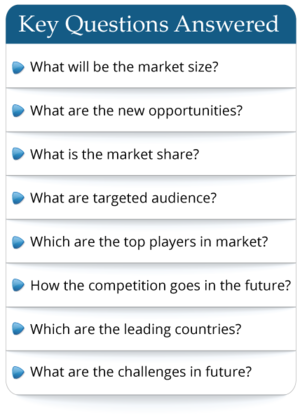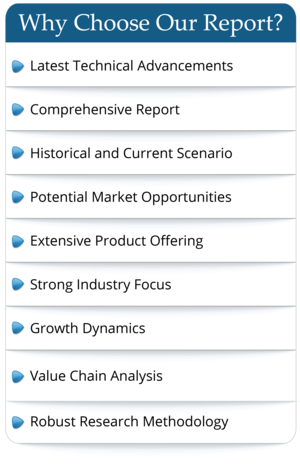Global Reflow Soldering System Market Research Report 2024
SKU ID : QYR-27226725 | Publishing Date : 17-Apr-2024 | No. of pages : 115
The global Reflow Soldering System market was valued at US$ 375.8 million in 2023 and is anticipated to reach US$ 476.7 million by 2030, witnessing a CAGR of 4.3% during the forecast period 2024-2030.
The growth of the reflow soldering system market is influenced by several factors related to the electronics manufacturing industry, technological advancements, and market dynamics. Reflow soldering is a crucial process in the production of electronic devices, and its growth is closely tied to the broader trends in electronics manufacturing. Here are some key factors contributing to the growth of the reflow soldering system market:
Rapid Growth in Electronics Manufacturing: The electronics industry continues to expand globally, driven by the demand for consumer electronics, communication devices, automotive electronics, and industrial equipment. This growth fuels the need for efficient soldering processes, including reflow soldering.
Miniaturization and Component Integration: As electronic devices become smaller and more compact, the assembly of increasingly complex and densely packed components requires precise and reliable soldering techniques. Reflow soldering systems are well-suited for soldering miniature components and surface-mount devices (SMDs).
Lead-Free Soldering Regulations: Environmental regulations, such as the Restriction of Hazardous Substances (RoHS) directive, have led to the adoption of lead-free soldering processes in many regions. Reflow soldering systems are essential for lead-free soldering, contributing to their market growth.
Advancements in Soldering Technologies: Continuous innovation in soldering technologies, including reflow soldering, has led to improved control over the soldering process, resulting in higher yields, reduced defects, and better quality solder joints.
Industry 4.0 and Automation: The integration of Industry 4.0 principles and smart manufacturing practices has driven the demand for automated and digitally connected reflow soldering systems. These systems offer real-time monitoring, process optimization, and data analytics capabilities.
Demand for High-Throughput Production: Electronics manufacturers aim to increase production throughput while maintaining high-quality soldering. Reflow soldering systems with features like multi-zone temperature control and conveyor speed adjustment help meet these demands.
Application in Diverse Industries: Reflow soldering systems find applications not only in consumer electronics but also in automotive, aerospace, medical devices, telecommunications, and industrial electronics. The diversity of industries contributes to market growth.
This report aims to provide a comprehensive presentation of the global market for Reflow Soldering System, with both quantitative and qualitative analysis, to help readers develop business/growth strategies, assess the market competitive situation, analyze their position in the current marketplace, and make informed business decisions regarding Reflow Soldering System.
Report Scope
The Reflow Soldering System market size, estimations, and forecasts are provided in terms of output/shipments (Units) and revenue ($ millions), considering 2023 as the base year, with history and forecast data for the period from 2019 to 2030. This report segments the global Reflow Soldering System market comprehensively. Regional market sizes, concerning products by Type, by Application, and by players, are also provided.
For a more in-depth understanding of the market, the report provides profiles of the competitive landscape, key competitors, and their respective market ranks. The report also discusses technological trends and new product developments.
The report will help the Reflow Soldering System manufacturers, new entrants, and industry chain related companies in this market with information on the revenues, production, and average price for the overall market and the sub-segments across the different segments, by company, by Type, by Application, and by regions.
Market Segmentation
By Company
BTU International
Kurtz Ersa
TAMURA Corporation
Heller Industries
SMT Wertheim
Electrovert
Vitronics Soltec
Rehm Thermal Systems
Manncorp
Nordson
ITW EAE
SEHO Systems GmbH
EIGHTECH TECTRON
Suneast
Shenzhen Hexi
Shenzhen JT Automation
Segment by Type
Convection Reflow Soldering
Condensation Reflow Soldering
Segment by Application
Automotive Electronics
Consumer Electronics
Telecommunication
Others
Production by Region
North America
Europe
China
Japan
Consumption by Region
North America
U.S.
Canada
Europe
Germany
France
U.K.
Italy
Russia
Asia-Pacific
China
Japan
South Korea
China Taiwan
Southeast Asia
India
Latin America, Middle East & Africa
Mexico
Brazil
Turkey
GCC Countries
Chapter Outline
Chapter 1: Introduces the report scope of the report, executive summary of different market segments (by region, by Type, by Application, etc), including the market size of each market segment, future development potential, and so on. It offers a high-level view of the current state of the market and its likely evolution in the short to mid-term, and long term.
Chapter 2: Detailed analysis of Reflow Soldering System manufacturers competitive landscape, price, production and value market share, latest development plan, merger, and acquisition information, etc.
Chapter 3: Production/output, value of Reflow Soldering System by region/country. It provides a quantitative analysis of the market size and development potential of each region in the next six years.
Chapter 4: Consumption of Reflow Soldering System in regional level and country level. It provides a quantitative analysis of the market size and development potential of each region and its main countries and introduces the market development, future development prospects, market space, and production of each country in the world.
Chapter 5: Provides the analysis of various market segments by Type, covering the market size and development potential of each market segment, to help readers find the blue ocean market in different market segments.
Chapter 6: Provides the analysis of various market segments by Application, covering the market size and development potential of each market segment, to help readers find the blue ocean market in different downstream markets.
Chapter 7: Provides profiles of key players, introducing the basic situation of the main companies in the market in detail, including product production/output, value, price, gross margin, product introduction, recent development, etc.
Chapter 8: Analysis of industrial chain, including the upstream and downstream of the industry.
Chapter 9: Introduces the market dynamics, latest developments of the market, the driving factors and restrictive factors of the market, the challenges and risks faced by manufacturers in the industry, and the analysis of relevant policies in the industry.
Chapter 10: The main points and conclusions of the report.
Frequently Asked Questions
- By product type
- By End User/Applications
- By Technology
- By Region

 Pre-order Enquiry
Pre-order Enquiry Request Free Sample
Request Free Sample


 Request Sample
Request Sample Request Discount
Request Discount










